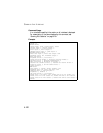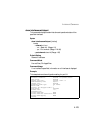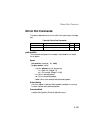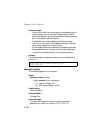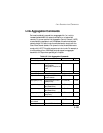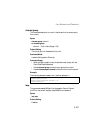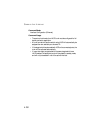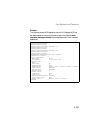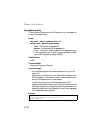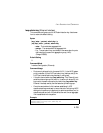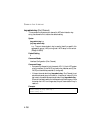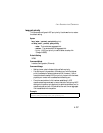
C
OMMAND
L
INE
I
NTERFACE
4-150
Guidelines for Creating Trunks
General Guidelines –
• Finish configuring port trunks before you connect the corresponding
network cables between switches to avoid creating a loop.
• A trunk can have up to 32 ports.
• The ports at both ends of a connection must be configured as trunk
ports.
• All ports in a trunk must be configured in an identical manner,
including communication mode (i.e., speed, duplex mode and flow
control), VLAN assignments, and CoS settings.
• All the ports in a trunk have to be treated as a whole when moved
from/to, added or deleted from a VLAN via the specified
port-channel.
• STP, VLAN, and IGMP settings can only be made for the entire trunk
via the specified port-channel.
Dynamically Creating a Port Channel –
Ports assigned to a common port channel must meet the following
criteria:
• Ports must have the same LACP system priority.
• Ports must have the same port admin key (Ethernet Interface).
• If the port channel admin key (lacp admin key - Port Channel) is not
set when a channel group is formed (i.e., it has the null value of 0), this
key is set to the same value as the port admin key (lacp admin key -
Ethernet Interface) used by the interfaces that joined the group.
• However, if the port channel admin key is set, then the port admin key
must be set to the same value for a port to be allowed to join a channel
group.
• If a link goes down, LACP port priority is used to select the backup
link.



